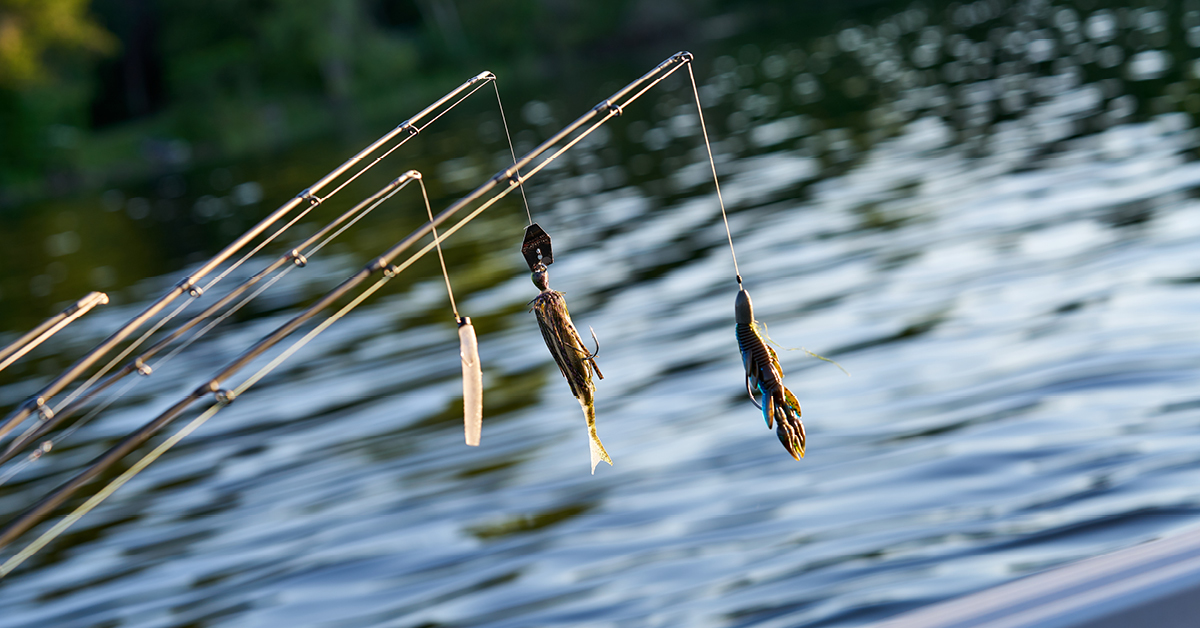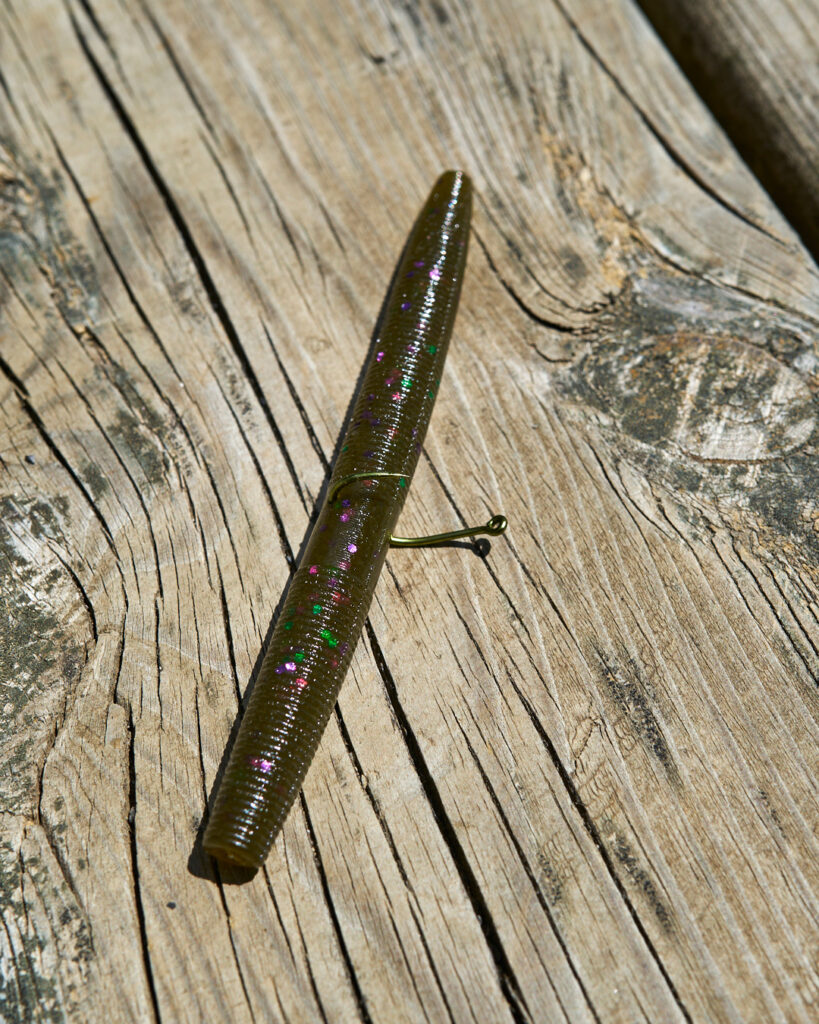The Best Gear for Walleye Fishing, as Recommended by an Expert
Fishing | August 20, 2025
SAIL
June 11, 2021

Largemouth and smallmouth bass are the most popular gamefish in North America. As an avid bass angler and fishing guide, I’m fortunate to spend a lot of time on the water chasing bass as well as teaching others how to catch them. Bass are abundant here in Ontario, and there are seemingly endless techniques and lures you can use to catch them. I’ve put together a list below with some suggestions on basic equipment and techniques to get you started if you’re new to bass fishing.
Article written in collaboration with Ashley Rae of She Loves To Fish.
When I host new anglers aboard my boat, they’re often surprised at how many rods I have. My explanation is that fishing rods are a lot like golf clubs. Each is best suited with one or more techniques in mind. Using a rod designed for a particular technique can essentially help you to be more effective with your presentation, and can also lead to a more enjoyable experience. It’s no fun being frustrated with your equipment because it’s not suitable for the task at hand. However, when you’re just getting into bass fishing, it’s common for people to purchase an all-around rod and reel that will work for a variety of techniques.
If I had to choose an all-around bass fishing rod, I’d likely go with a 7’ (213 cm) medium or medium-heavy action/power spinning rod. I’d pair this with a size 2500 spinning reel. This is a versatile set up that will give you enough power to handle any type of bass here in Ontario and can work for a variety of techniques.
As for fishing line, much like rods and reels, each type of line has its benefits depending on the presentation you’re using it for. Your rod will have a recommended line-breaking strain (measured in pound test) along with a lure weight range listed typically above the reel seat. Manufacturers typically list the line capacity for fishing reels on the product packaging or on the reel itself. For a general set up, however, I’d suggest going with 20lb (9.1kg) test braided line. Braid is easier for newcomers to handle and cast as it has a smaller diameter, and no memory (meaning it doesn’t get coiled like monofilament or fluorocarbon when it comes off the spool). It also has very little stretch and with that, provides increased sensitivity to feel bites. The biggest drawback with braid is that it’s more visible in the water compared to monofilament or fluorocarbon if you’re fishing in clear water conditions. In this situation, it’s a good idea to tie on a fluorocarbon leader about the length of your rod. Fluorocarbon was designed to be virtually invisible underwater.

Shown here is a 4” Gary Yamamoto Senko (also referred to as a stickbait) rigged on an Owner Wacky Hook. Take notice of the shape of the worm (straight), and also the hook placement. This is a very popular and effective technique for both largemouth and smallmouth bass. When you cast out a wacky rigged Senko, it’ll flutter as it sinks horizontally. Bass will often hit it on the drop or pick it up off bottom. This makes it fairly easy to fish as you simply have to cast, let it sink, move it a few feet, let it sink again, and repeat until you’ve retrieved it all the way in. You’ll want to keep your line semi-slack as your bait sinks. It should be tight enough that you can detect any bites but not so tight that it prevents your bait from sinking naturally. When you feel a bite, set the hook right away in a side or upward sweeping motion.
Another great hook option for this type of presentation is a circle hook. Circle hooks are great for newcomers or children as you don’t need to set the hook in a traditional manner. Simply reeling down on the fish is enough to drive the hook home. Additionally, circle hooks help prevent fish from being gut-hooked as the in-turned hook point and circular bend typically ends up hooking fish in the corner of the mouth.
A Ned rig is a finesse technique that consists of a small soft plastic worm or creature bait rigged on a mushroom-shaped jig head. This is one of my favourite techniques to share with newcomers as it’s so effective and simple to fish. You can cast it out, let it sink, hop it, drag it, or even let it sit on the bottom without any movement. I prefer the Z-Man TRD soft plastic stickbaits paired with a Z-Man NedlockZ HD Jighead.
Now onto moving baits! Spinnerbaits typically consist of a skirted jighead fixed on a wire opposite a blade or multiple blades. I picked up the Z-Man SlingBladeZ spinnerbaits last year and found them to be very effective on bass! Designed to mimic baitfish, the skirt pulsates, and the blades will spin causing flash and vibrations. A spinnerbait is a great option for covering water quickly to locate fish. The key with spinnerbaits is you must ensure to keep them moving fast enough to keep those blades spinning. If you’re throwing one for the first time, it’s a good idea to do a short cast and take a look in the water to determine how fast you should retrieve it to keep the blades spinning. You should also be able to feel the vibrations in your rod when the blades are spinning.
A bladed swim jig, also known as a Chatterbait, is another one of my favourite search baits for bass. It consists of a blade affixed to a skirted jig. Like the spinnerbait, you’ll want to make sure that you’re retrieving quickly enough for the blade to vibrate and wobble which imitates a frantic baitfish. Varying the retrieve by twitching the rod or speeding/slowing the speed at which you reel in brings the bait to life even more. The Z-Man Chatterbait line-up has been my go-to for bladed swim jigs for a number of years. Although I don’t throw these around thick cover, I do find the Chatterbaits can break through the weeds a little easier than a spinnerbait. I find they can be effective in stained water conditions as well since the blade gives off so much vibration. I also like to beef up the profile and add some extra action to my Chatterbait by threading a Z-Man RaZor ShadZ on the hook.
As I mentioned leading into this post, the opportunities are nearly endless when it comes to presentations that will work for bass. I hope these suggestions may help get you started. All the best on the water this season!
To find everything you need for bass fishing, browse our selection of items dedicated to this species.